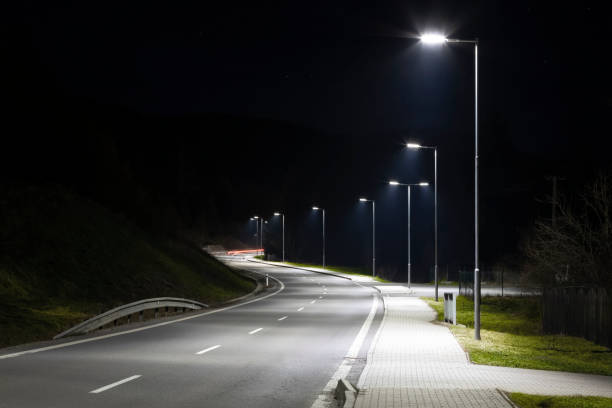Introduction:
Street lighting serves as a critical element of urban infrastructure, providing safety, security, and visibility during nighttime hours To ensure the effectiveness and longevity of street lighting installations, it is essential to adhere to safety and structural requirements. This article delves into the significance of these requirements and highlights
the key considerations for designing and maintaining safe and reliable street lighting systems.
Importance of Safety and Structural Requirements:
- Public Safety: Well-designed and properly installed street lighting enhances public safety by reducing the risk of accidents, criminal activities, and tripping hazards in urban areas.
- Traffic Management: Safety and structural requirements of street lighting to better traffic flow, minimizing the likelihood of collisions and improving overall road safety.
- Pedestrian Comfort: Properly lit sidewalks and crosswalks ensure the comfort and security of pedestrians, encouraging more people to walk, which in turn promotes a healthier urban environment.
- Enhanced Surveillance: Illuminated areas deter criminal activities and aid security cameras in capturing clear images, supporting law enforcement efforts.
- Visual Comfort: Adequate lighting levels improve visibility, reducing eye strain and discomfort for both drivers and pedestrians.
Key Considerations for Safety and Structural Requirements:
- Illumination Standards: Follow recommended illumination standards for different types of roads, intersections, and pedestrian pathways to ensure optimal visibility and safety.
- Proper Spacing: Distribute road and outdoor lighting evenly to avoid over-illumination or dark spots. Proper spacing ensures consistent lighting coverage and reduces energy wastage.
- Uniformity: Aim for uniform lighting distribution to minimize contrast and shadows, creating a comfortable and safe environment.
- Glare Control: Utilize fixtures with proper shielding to reduce glare, which can impair visibility and cause discomfort for road users.
- Pole Height and Placement: Consider the height and placement of lighting poles to achieve adequate coverage without obstructions. Proper spacing prevents collisions with poles by vehicles.
- Weather Resistance: Choose durable materials and protective coatings that can withstand varying weather conditions, preventing corrosion and extending the life of fixtures.
- Cabling and Wiring: Ensure that cabling and wiring are safely concealed and protected to prevent accidents and vandalism.
- Structural Integrity: ZGSM street lamp should be structurally sound and engineered to withstand wind loads, preventing toppling during adverse weather.
- Maintenance Access: Design lighting systems with easy access points for maintenance and repairs, facilitating timely upkeep.
- Compliance with Regulations: Adhere to local building codes, regulations, and safety standards for street lighting design, installation, and maintenance.
Regular Maintenance and Inspection:
- Periodic Checks: Regularly inspect and maintain street lighting fixtures, wiring, and poles to ensure they remain in optimal condition.
- Timely Repairs: Address any damages, malfunctions, or issues promptly to maintain consistent lighting and prevent safety hazards.
- Upgrading Technology: Consider upgrading to energy-efficient LED lighting solutions that offer longer lifespans and reduced maintenance needs.
Conclusion:
Safety and structural requirements play a crucial role in creating well-lit urban environments that promote public safety and enhance the overall quality of life. By adhering to these requirements, urban planners, designers, and municipal authorities contribute to safer streets, reduced accidents, and improved livability Investing in proper lighting infrastructure not only addresses safety concerns but also fosters more vibrant and secure communities after the sun sets.








